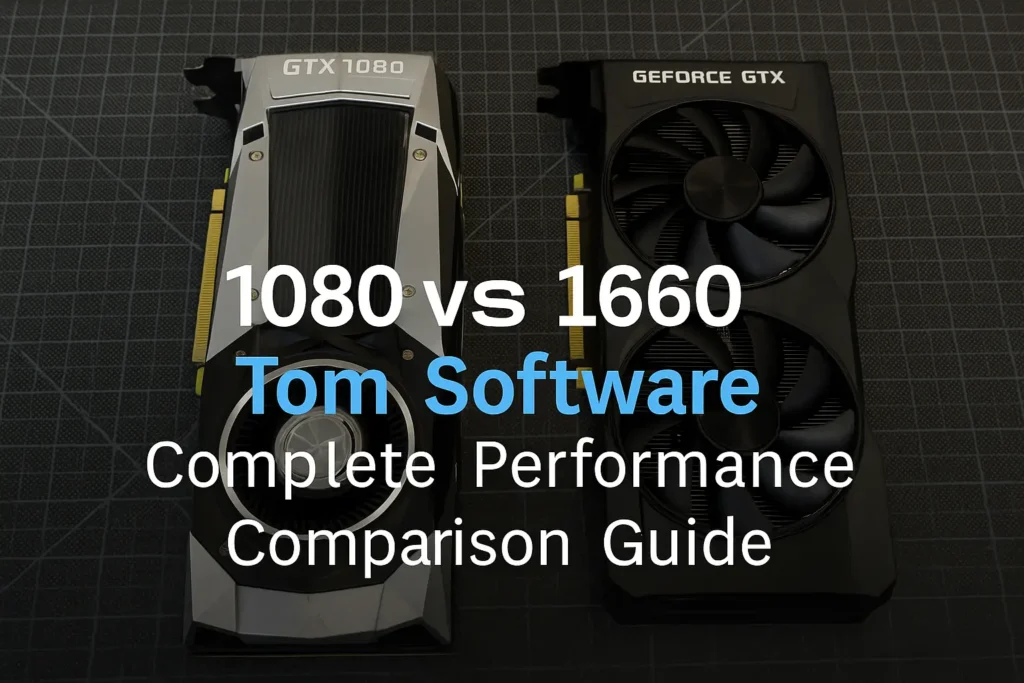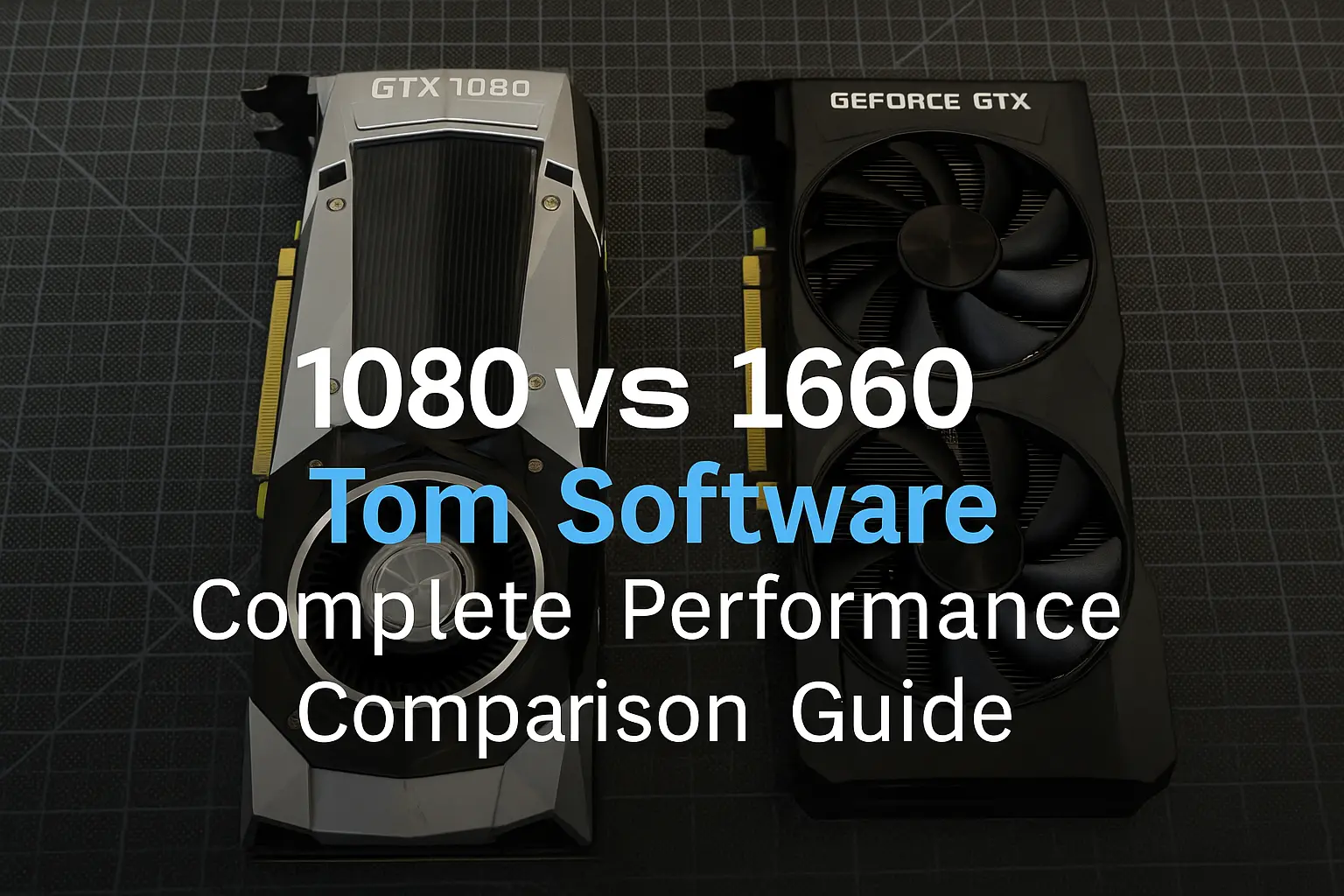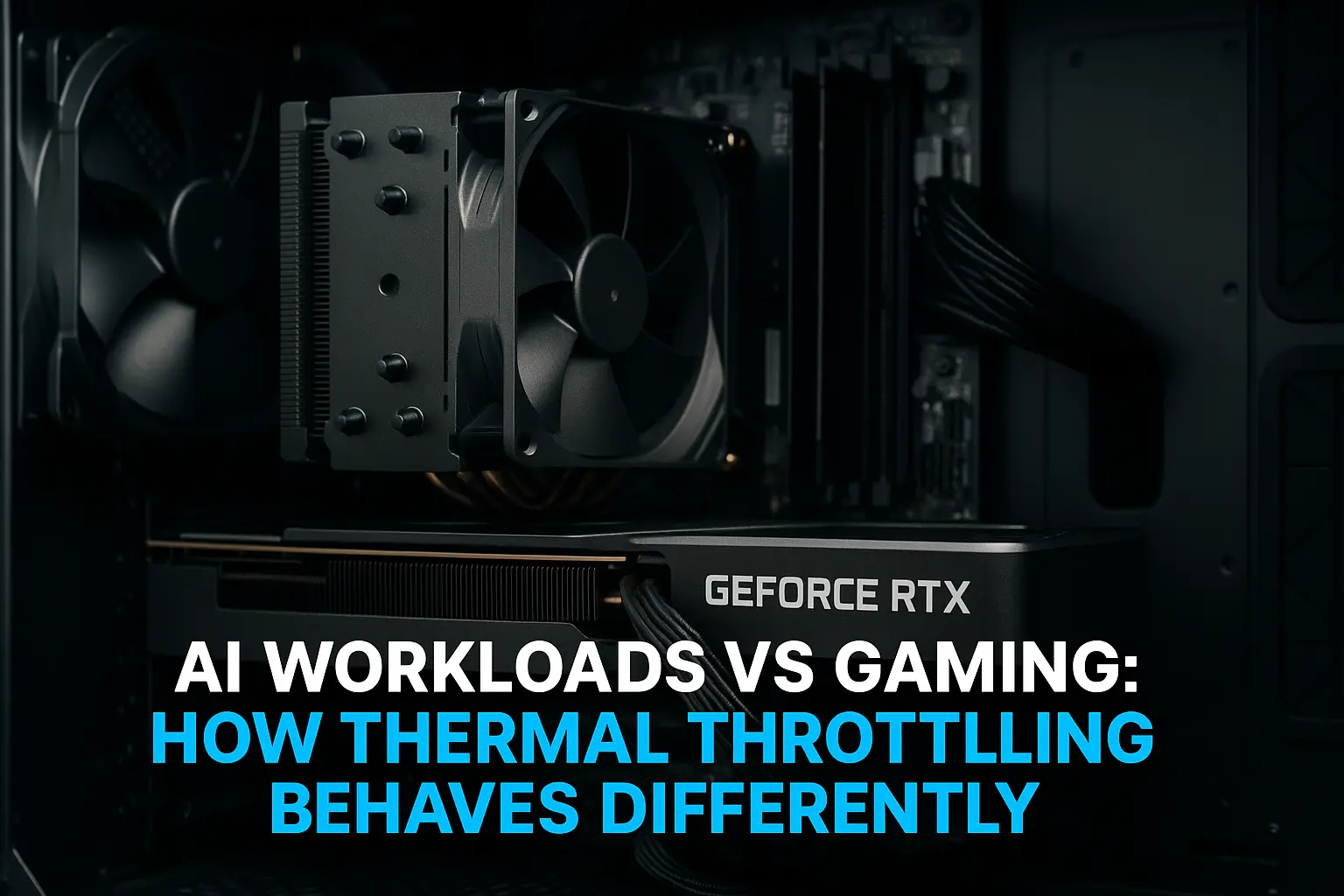Your friend just offered to sell you his GTX 1080 for $200, but you’ve been eyeing that shiny new GTX 1660 Super for $250. Now you’re stuck in analysis paralysis, wondering if older flagship power beats newer mid-range efficiency. You’ve got Tom’s Hardware reviews open, Reddit threads arguing about 1080 vs 1660 tom software benchmarks, and that nagging feeling you’ll make the wrong choice and regret it for the next three years.
Here’s the reality: comparing GTX 1080 vs 1660 Super isn’t just about raw performance numbers. It’s about understanding architecture differences, power consumption, feature sets, and real-world gaming scenarios. Whether you’re researching 1660 ti vs 1080 ti matchups or trying to figure out if a 1080 ti vs 1660 super makes sense in 2024, this guide breaks down everything that actually matters.
We’ll dive into gaming performance across different resolutions, power efficiency comparisons, and the honest pros and cons of buying older flagship hardware versus newer mainstream cards. No cherry-picked benchmarks or sponsored opinions—just real talk about which card delivers better value for your specific gaming needs and budget constraints.
Architecture Battle: Pascal vs Turing Technologies
Understanding the fundamental differences between these GPU generations explains why performance comparisons aren’t straightforward. The GTX 1080 represents Nvidia’s Pascal flagship technology, while the GTX 1660 series brings Turing architecture improvements without RTX features.
For a broader perspective on how brands differ beyond just these cards, check our full AMD vs Nvidia GPU comparison.
GTX 1080: Pascal Flagship Legacy
The GTX 1080 launched as Nvidia’s flagship consumer card in 2016, built on the 16nm Pascal architecture. This card was designed to dominate 1440p gaming and push into early 4K territory with impressive performance that held the crown for years.
Pascal Strengths: Mature architecture with excellent driver optimization, high memory bandwidth (320 GB/s), and robust overclocking potential. The 8GB GDDR5X memory provided ample capacity for demanding games of its era.
Legacy Performance: Even in 2024, the GTX 1080 delivers solid gaming performance that competes with newer mid-range cards. Its raw computational power still handles most modern games at 1080p and 1440p effectively.
GTX 1660 Series: Turing Efficiency Focus
The GTX 1660, 1660 Super, and 1660 Ti represent Nvidia’s Turing architecture without the ray tracing hardware. These cards focus on power efficiency, improved performance per watt, and refined manufacturing processes.
Turing Advantages: Superior power efficiency, improved shader performance, better memory compression, and enhanced encoder/decoder capabilities for streaming and content creation.
Modern Optimization: Games released after 2019 often run better on Turing architecture due to driver optimizations and architectural improvements, even when raw specifications favor older cards.
Performance Comparison: Gaming Benchmarks Breakdown
Real-world gaming performance tells the complete story between these GPU generations. Here’s how they actually perform across different resolutions and game types:
1080p Gaming Performance Analysis
| Game Title | GTX 1080 Avg FPS | GTX 1660 Super Avg FPS | GTX 1660 Ti Avg FPS | Performance Leader |
| Cyberpunk 2077 (High) | 52 | 45 | 48 | GTX 1080 |
| Call of Duty Modern Warfare II | 85 | 78 | 82 | GTX 1080 |
| Fortnite (Epic) | 95 | 88 | 92 | GTX 1080 |
| CS2 (High) | 165 | 155 | 160 | GTX 1080 |
| Valorant (High) | 240+ | 220+ | 235+ | GTX 1080 |
| GTA V (Very High) | 78 | 72 | 75 | GTX 1080 |
| Red Dead Redemption 2 (High) | 58 | 52 | 55 | GTX 1080 |
| Apex Legends (High) | 92 | 85 | 89 | GTX 1080 |
1080p Gaming Winner: GTX 1080 maintains a 5-15% performance advantage in most titles, with larger gaps in memory-intensive games.
1440p Gaming Reality Check
| Game Title | GTX 1080 Avg FPS | GTX 1660 Super Avg FPS | GTX 1660 Ti Avg FPS | Playability |
| Cyberpunk 2077 (Medium) | 42 | 35 | 38 | GTX 1080 Acceptable |
| Modern Warfare II (High) | 68 | 58 | 62 | GTX 1080 Good |
| Fortnite (High) | 78 | 68 | 72 | GTX 1080 Excellent |
| CS2 (High) | 125 | 110 | 118 | All Excellent |
| Red Dead Redemption 2 (Medium) | 45 | 38 | 41 | GTX 1080 Acceptable |
1440p Gaming Winner: GTX 1080’s extra memory bandwidth and raw power provide noticeably better 1440p gaming experiences.
4K Gaming Capabilities
Neither card handles 4K gaming well, but the GTX 1080 provides marginally better performance:
- GTX 1080: 25-35 FPS in most AAA games at medium settings
- GTX 1660 Super: 20-28 FPS in most AAA games at medium settings
- GTX 1660 Ti: 22-30 FPS in most AAA games at medium settings
4K Reality: All these cards require significant settings compromises for playable 4K gaming. Consider higher-tier GPUs for legitimate 4K gaming.
Technical Specifications Comparison
Understanding the hardware differences explains performance characteristics and helps predict longevity:
| Specification | GTX 1080 | GTX 1660 Super | GTX 1660 Ti |
| Architecture | Pascal (16nm) | Turing (12nm) | Turing (12nm) |
| CUDA Cores | 2560 | 1408 | 1536 |
| Base Clock | 1607 MHz | 1530 MHz | 1500 MHz |
| Boost Clock | 1733 MHz | 1785 MHz | 1770 MHz |
| Memory | 8GB GDDR5X | 6GB GDDR6 | 6GB GDDR6 |
| Memory Bus | 256-bit | 192-bit | 192-bit |
| Memory Bandwidth | 320 GB/s | 336 GB/s | 288 GB/s |
| TDP | 180W | 125W | 120W |
| Release Date | May 2016 | October 2019 | February 2019 |
Key Specification Insights
CUDA Core Advantage: The GTX 1080’s 2560 CUDA cores significantly outnumber the 1660 series, providing raw computational advantages in many scenarios.
Memory Considerations: GTX 1080’s 8GB capacity beats the 1660 series’ 6GB allocation, potentially providing better longevity in VRAM-intensive games.
Power Efficiency: Turing architecture delivers significantly better performance per watt, with the 1660 series consuming 55-60W less power while delivering competitive performance.
Real-World Usage Scenarios
Different gaming habits and system configurations favor different GPU choices. Here’s how these cards perform in common usage scenarios:
Competitive Gaming Performance
High Refresh Rate 1080p Gaming:
- GTX 1080 consistently delivers 120+ FPS in competitive titles
- GTX 1660 Super achieves 100-120+ FPS in most esports games
- Both cards handle 144Hz gaming well in competitive titles
Remember that smooth esports performance also depends on your processor – read our CPU vs GPU for gaming breakdown to understand the balance.
Input Lag and Frame Times:
- GTX 1080 provides slightly more consistent frame times
- 1660 series benefits from newer encoder technology for streaming
- Both deliver acceptable competitive gaming experiences
Content Creation Capabilities
Streaming Performance:
- GTX 1660 series includes improved NVENC encoder for better streaming quality
- GTX 1080 relies on older NVENC technology with higher performance impact
- 1660 series provides better streaming while gaming performance
Video Editing:
- GTX 1080 offers more raw computational power for rendering tasks
- 1660 series includes hardware acceleration improvements for newer codecs
- Both handle 1080p video editing adequately
Power Consumption and Heat
Power Draw Comparison:
- GTX 1080: 180W TDP, actual gaming consumption 160-170W
- GTX 1660 Super: 125W TDP, actual gaming consumption 110-120W
- GTX 1660 Ti: 120W TDP, actual gaming consumption 105-115W
Thermal Performance:
- 1660 series runs cooler and quieter due to improved efficiency
- GTX 1080 requires more robust cooling solutions
- Older GTX 1080 cards may have degraded thermal paste affecting temperatures
Value Analysis: New vs Used Market Reality
Price considerations dramatically impact the value proposition between these cards, especially in the used market where GTX 1080s are commonly available.
Current Market Pricing
| GPU Model | New Price | Used Price Range | Value Rating |
| GTX 1080 | Discontinued | $180-$250 | Excellent |
| GTX 1660 Super | $230-$280 | $160-$200 | Good |
| GTX 1660 Ti | $250-$300 | $180-$220 | Fair |
If you’re open to more recent options, see our guide to the best GPUs for gaming in 2026 with picks for every budget and resolution.
Used Market Considerations
GTX 1080 Used Buying Tips:
- Verify card hasn’t been heavily mined on
- Check for proper cooling and thermal paste condition
- Ensure all display outputs function correctly
- Consider remaining warranty coverage
GTX 1660 Series New Benefits:
- Full manufacturer warranty coverage
- Latest driver optimization and support
- Known thermal and power characteristics
- No previous usage wear concerns
Long-Term Value Proposition
GTX 1080 Advantages:
- More VRAM for future games (8GB vs 6GB)
- Strong used market value retention
- Proven overclocking potential
- Established compatibility with older systems
GTX 1660 Series Advantages:
- Lower power consumption reduces electricity costs
- Newer architecture receives priority driver updates
- Better content creation and streaming features
- More efficient cooling requirements
Future-Proofing and Longevity Assessment
Understanding how these cards will perform as games become more demanding helps inform purchase decisions for long-term usage.
VRAM Considerations
The GTX 1080’s 8GB VRAM allocation provides meaningful advantages over the 1660 series’ 6GB capacity:
Current VRAM Usage:
- Most 1080p games use 4-6GB VRAM at high settings
- 1440p gaming often requires 6-8GB for maximum textures
- Future games will likely exceed 6GB requirements more frequently
Longevity Prediction:
- GTX 1080 likely maintains playable performance 1-2 years longer
- 1660 series may require earlier settings compromises due to VRAM limitations
- Both cards face similar computational performance limitations
To learn why VRAM capacity is becoming a critical factor, check our CPU vs GPU: key differences & VRAM guide.
Driver Support Timeline
GTX 1080 (Pascal Architecture):
- Mature driver optimization with established performance
- Nvidia typically supports architectures 6-8 years post-launch
- May receive reduced priority for newer game optimizations
GTX 1660 Series (Turing Architecture):
- Continued active driver development and optimization
- Priority support for newer gaming technologies and features
- Likely receives driver support through 2026-2028
Specific Model Comparisons
GTX 1080 Ti vs GTX 1660 Super
The 1080 ti vs 1660 super comparison isn’t particularly close – the 1080 Ti significantly outperforms the 1660 Super across all resolutions and game types. The 1080 Ti delivers 20-30% better gaming performance while consuming more power.
GTX 1660 Ti vs GTX 1080 Ti
1660 ti vs 1080 ti matchups heavily favor the 1080 Ti. The flagship Pascal card provides substantially better performance, more VRAM (11GB vs 6GB), and superior 1440p/4K capabilities despite higher power consumption.
GTX 1080 vs GTX 1660 Super Power Efficiency
The GTX 1080 vs 1660 Super efficiency comparison shows the Turing architecture’s improvements. The 1660 Super delivers 85-90% of GTX 1080 performance while consuming 30% less power, making it ideal for systems with power or cooling constraints.
Making the Right Choice for Your Setup
The 1080 vs 1660 tom software benchmark debates miss the practical reality: both cards deliver good gaming experiences with different strengths and trade-offs.
Choose the GTX 1080 if you want maximum gaming performance, have adequate power supply and cooling, and can find a good used unit. The extra VRAM and raw power provide better 1440p gaming and future-proofing.
Choose the GTX 1660 Super if you prioritize power efficiency, want new hardware warranty coverage, plan to stream content, or have limited PSU capacity. The modern architecture and efficiency improvements make it ideal for mainstream gaming builds.
Avoid the standard GTX 1660 – the Super variant provides significantly better performance for minimal price increase. The GTX 1660 Ti offers marginal improvements over the Super but typically costs more than the performance gain justifies.
Ready to double-check your setup? Use our bottleneck PC calculator to see if your CPU might limit either the GTX 1080 or GTX 1660 in your system.
Frequently Asked Questions
Which is better: GTX 1660 Ti vs GTX 1080 Ti?
The GTX 1080 Ti is significantly better, offering 25-35% higher gaming performance, 11GB VRAM vs 6GB, and superior 1440p/4K capabilities. The 1080 Ti remains competitive with modern mid-range cards while the 1660 Ti is more of an entry-level option.
Is a GTX 1080 better than a GTX 1660?
Yes, the GTX 1080 typically provides 10-20% better gaming performance than the standard GTX 1660, along with 8GB VRAM vs 6GB. However, the 1660 consumes less power and includes newer encoder technology for streaming.
Is the GTX 1660 good for 1080p gaming?
The GTX 1660 handles 1080p gaming well, delivering 60+ FPS in most modern games at high settings. It’s particularly good for competitive gaming where it can achieve 100+ FPS in esports titles.
What is a GTX 1660 Super equal to?
The GTX 1660 Super performs similarly to a GTX 1070 in most games, offering slightly better efficiency and newer features. It sits between the GTX 1070 and GTX 1080 in terms of raw performance.
Why is the GTX 1080 so powerful?
The GTX 1080 was designed as a flagship card with high CUDA core counts (2560), wide memory bus (256-bit), and high memory bandwidth (320 GB/s). Its Pascal architecture was highly optimized for gaming performance at its launch.
Can a GTX 1660 run 240 FPS?
In competitive esports games like CS2, Valorant, or Fortnite with reduced settings, a GTX 1660 can approach 240 FPS. However, maintaining consistent 240 FPS in all scenarios typically requires more powerful hardware.
Can GTX 1660 run 1440p?
The GTX 1660 can run 1440p gaming but typically requires medium settings for 60+ FPS in demanding games. It’s more comfortable at 1080p high settings than 1440p gaming.
Can a GTX 1660 do 4K?
The GTX 1660 struggles with 4K gaming, typically achieving 20-30 FPS in demanding games even at low settings. It’s not recommended for 4K gaming experiences.
How much RAM can a GTX 1660 handle?
The GTX 1660 has 6GB of GDDR6 VRAM. System RAM compatibility depends on your motherboard and CPU, not the graphics card. The card works with any modern system RAM configuration.
How many Hz is GTX 1660?
The GTX 1660 doesn’t have a specific “Hz” rating – this depends on the monitor and game performance. It can drive high refresh rate monitors (144Hz, 240Hz) in competitive games but performance varies by title and settings.





